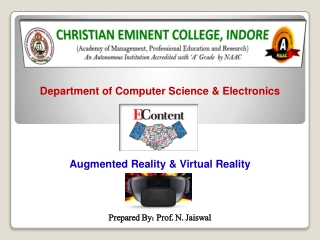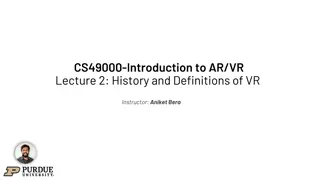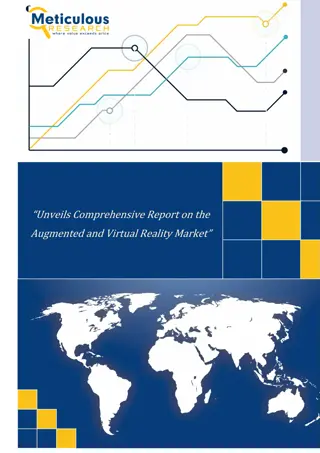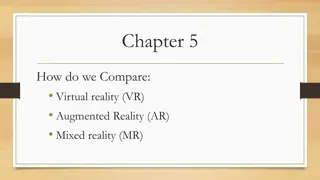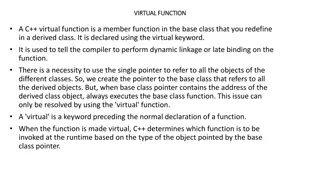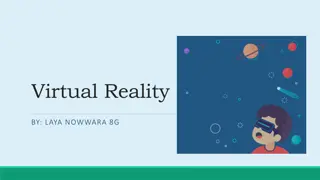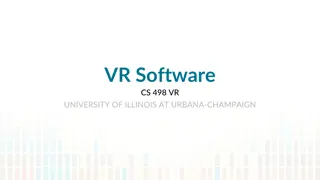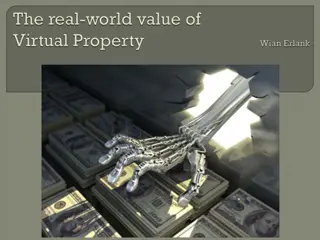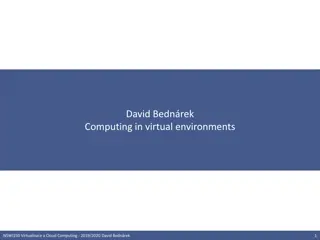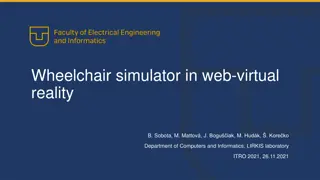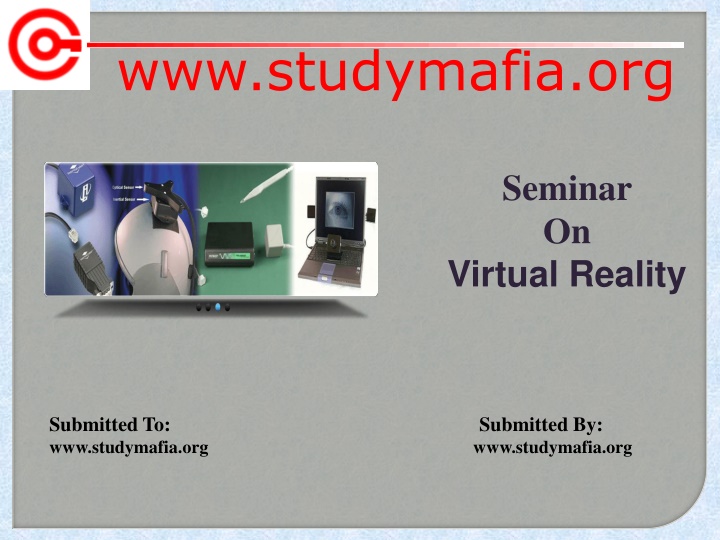
Dive into the World of Virtual Reality: History, Applications, and Advantages
Explore the fascinating realm of Virtual Reality (VR) including its history, principles, components, types, architecture, applications, advantages, and disadvantages. Discover how VR immerses users in computer-generated worlds and why it is a groundbreaking technology for various industries.
Download Presentation

Please find below an Image/Link to download the presentation.
The content on the website is provided AS IS for your information and personal use only. It may not be sold, licensed, or shared on other websites without obtaining consent from the author. If you encounter any issues during the download, it is possible that the publisher has removed the file from their server.
You are allowed to download the files provided on this website for personal or commercial use, subject to the condition that they are used lawfully. All files are the property of their respective owners.
The content on the website is provided AS IS for your information and personal use only. It may not be sold, licensed, or shared on other websites without obtaining consent from the author.
E N D
Presentation Transcript
www.studymafia.org Seminar On Virtual Reality Submitted To: www.studymafia.org www.studymafia.org Submitted By:
Introduction History Principle Components Types Architecture of VR System Application Advantages Disadvantages Conclusion
What is Virtual Reality(VR)? Virtual Reality refers to a high-end user interface that involves real-time simulation and interactions through multiple sensorial channels. . Why VR? VR is able to immerse you in a computer-generated world of your own making: a room, a city, the interior of human body. With VR, you can explore any uncharted territory of the human imagination.
In 1950s, flight simulators were built by US Air Force to train student pilots. In 1965, a research program for computer graphics called The Ultimate Display was laid out. In 1988, commercial development of VR began. In 1991, first commercial entertainment VR system "Virtuality" was released.
The Virtual Reality System works on the following principle - It tracks the physical movements in the real world, then a rendering computer redraws the virtual world to reflects those movements. The updated virtual world is sent to the output (to the user in the real world). In this case, the output is sent back to a head mounted display. Hence, The user feels "immersed" in the virtual world - as if she was in the virtual world itself as all she can see is her rendered movements in the virtual world.
REALITY ENGINE HEAD MOUNTED DISPLAY (HMD) AUDIO UNITS GLOVES
Reality engines are based largely on the same components that make up a personal computer (PC), although much more computing power is required for the reality engine than is available in a standard PC. Virtual reality images are made with tiny dot like segments of a picture known as pixels, or picture elements. Each pixel itself is made up of hundreds of thousands of dots. Realistic images can be either opaque, in which all the viewer sees is the virtual world, or see-through, in which the virtual image is projected or superimposed onto the outer world
Head-mounted display (HMD) units use a small screen or screens (one for each eye) that are worn in a helmet or a pair glasses. Unlike a movie, where the director controls what the viewer sees, the HMD allows viewers to look at an image from various angles or change their field of view by simply moving their heads. HMD units usually employ cathode-ray tube (CRT) or liquid crystal display (LCD) technology. CRTs incorporate optic systems that reflect an image onto the viewer's eye. Although more bulky and heavy than LCD displays, CRT systems create images that have extremely high resolutions, making a scene seem that much more realistic. civilian/commercial (medicine, video gaming, sports, etc.).
The audio portion of virtual reality is transmitted through small speakers placed over each ear. Audio cues may include voices, singing, thud like noises of colliding objects in short, any sound that can be recorded. Sounds that seem to come from above, below, or either side provide audio cues that mimic how sounds are heard in the real world. Three- dimensional (or omnidirectional) sound further enhances the virtual reality experience.
Gloves in virtual reality allow the user to interact with the virtual world. For example, the user may pick up a virtual block, turn it over in a virtual hand, and set it on a virtual table. Wired with thin fiberoptic cables, some gloves use light-emitting diodes (LEDs) to detect the amount of light passing through the cable in relation to the movement of the hand or joint. The computer then analyzes the corresponding information and projects this moving hand into the virtual reality. Magnetic tracking systems also are used to determine where the hand is in space in relation to the virtual scene.
Hardware Primary user input interfaces Tracking interfaces Visual interfaces Auditory interfaces Haptic interfaces Olfactory interfaces Software Input Process Simulation Process Rendering Process World Database
Input Processor, Simulation Processor, Rendering Processor and World Database.
Entertainment More vivid Move exciting More attractive Medicine Practice performing surgery. Perform surgery on a remote patient. Teach new skills in a safe, controlled environment.
Manufacturing Easy to modify Low cost High efficient Education & Training Driving simulators. Flight simulators. Ship simulators. Tank simulators.
Many different fields can use VR as a way to train students without actually putting anyone in harm's way. This includes the fields of medicine, law enforcement, architecture and aviation. VR also helps those that can't get out of the house experience a much fuller life. These patients can explore the world through virtual environments like Second Life, a VR community on the Internet, exploring virtual cities as well as more fanciful environments like J.R.R. Tolkien's Middle Earth. This also helps record exactly how quickly a patient is learning and recovering.
The hardware needed to create a fully immersed VR experience is still cost prohibitive. The total cost of the machinery to create a VR system is still the same price as a new car, around $20,000. The technology for such an experience is still new and experimental. VR is becoming much more commonplace but programmers are still grappling with how to interact with virtual environments. The idea of escapism is common place among those that use VR environments and people often live in the virtual world instead of dealing with the real one.
Cybersickness / simulator sickness Low-fidelity Expensive Lack of integration between application packages High-fidelity system Cost-saving Collaborative High-level contact between participants in distributed VR
VR introduces a new way of interacting with computers The best of VR is yet to come Web is very suitable for VR applications, but the proper technology is not yet there
Roof calculator-software,calculates & tracks materials, estimates Put a roofing estimate together in under 2 minutes and get a complete roof material list ! Studymafia.org Google.com

